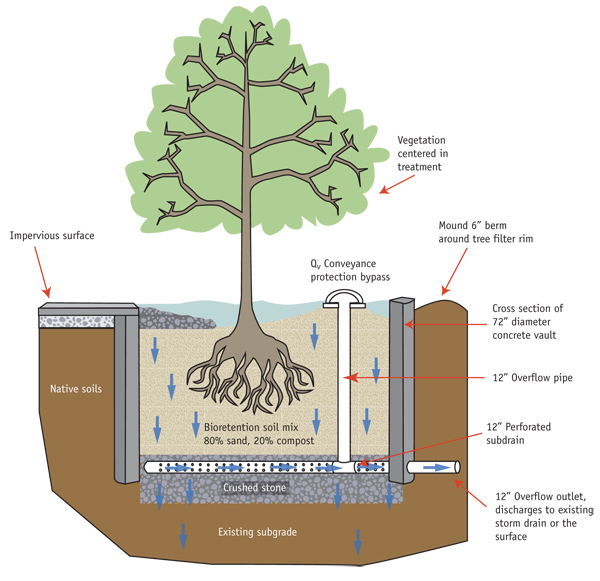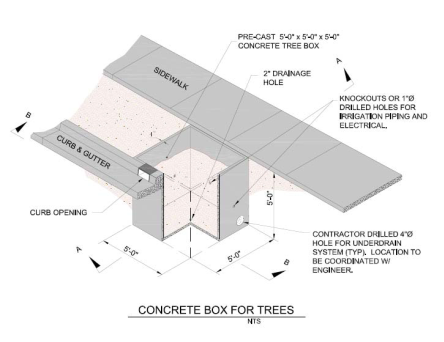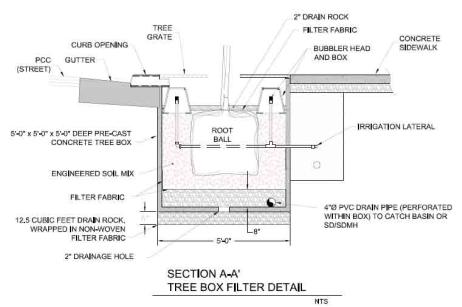

| Tree box filters |
||
| Components | ||
Tree box filters typically have a prefabricated or precast container, a mulch layer, a bioretention soil mix, observation and cleanout pipes, underdrain pipes, a street tree or large shrub, and a grate cover (see Figure 1). Plants are an integral part of the bioretention system, and should be chosen for their ability to withstand varying levels of water inundation and their non-invasive root systems (to avoid decreasing the soil’s water filtration capacity).
The containers can resemble a curbside planter (see Figure 2) and are filled with a biorentention soil mix, which is installed below grade at the curb line. The containers are often closed, but some non-conventional tree box filters have open sides or bottoms, such as the Green Street Systems (http://www.treeboxfilter.com). The GSS tree box filters promote healthier tree growth and lateral root migration. Tree box filters should be located upstream of a standard curb inlet. Stormwater runoff flows from impervious surfaces through their filter media, where biological, physical, and chemical treatments occur. The water then runs out through an underdrain or into the surrounding soil. The underdrain is connected to a storm drainpipe. For high flows, stormwater will bypass the tree box filter, if it is full, and flow directly into the inlet. Storage capacity can also be added beneath the filter box with an outlet control device to control runoff volumes. See Figures 3 and 4 for sample details of planting, irrigation, and drainage components.
An example of an installed tree box filter system is at the University of New Hampshire Stormwater Control field site. It has a 6 foot diameter concrete vault that is open-bottomed to enhance infiltration. The filter media is 3 feet deep, with 80 percent sand and 20 percent compost, designed to maximize permeability with a minimum organic content to sustain vegetation. It was sized for water quality volume (WQv) and for 4 to 6 inches of ponding. Its filter media accommodates a high infiltration rate of 120 feet per day. |
||
|
||



